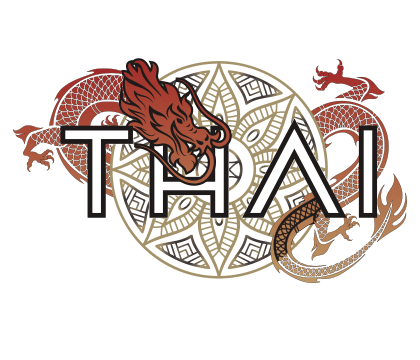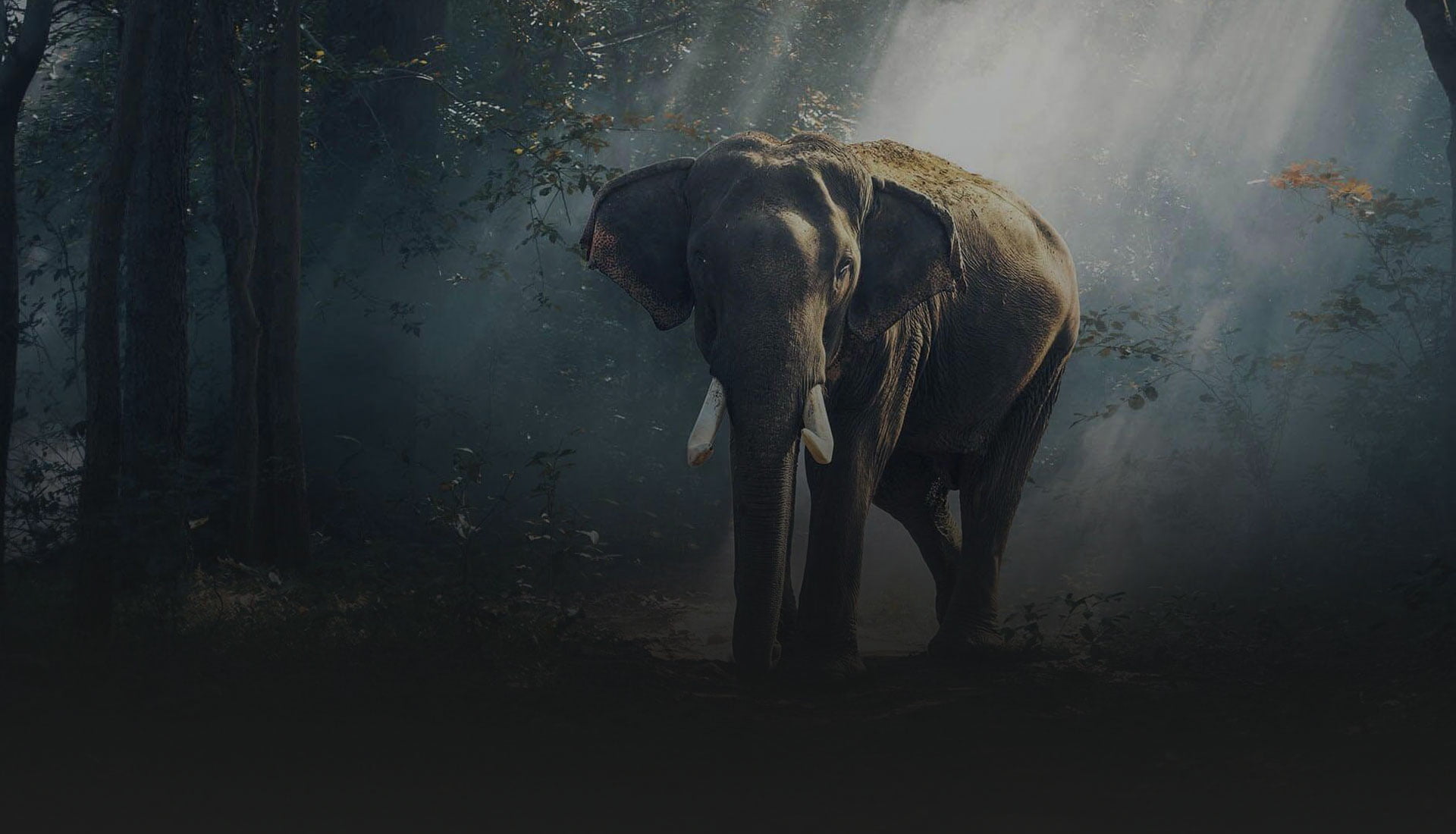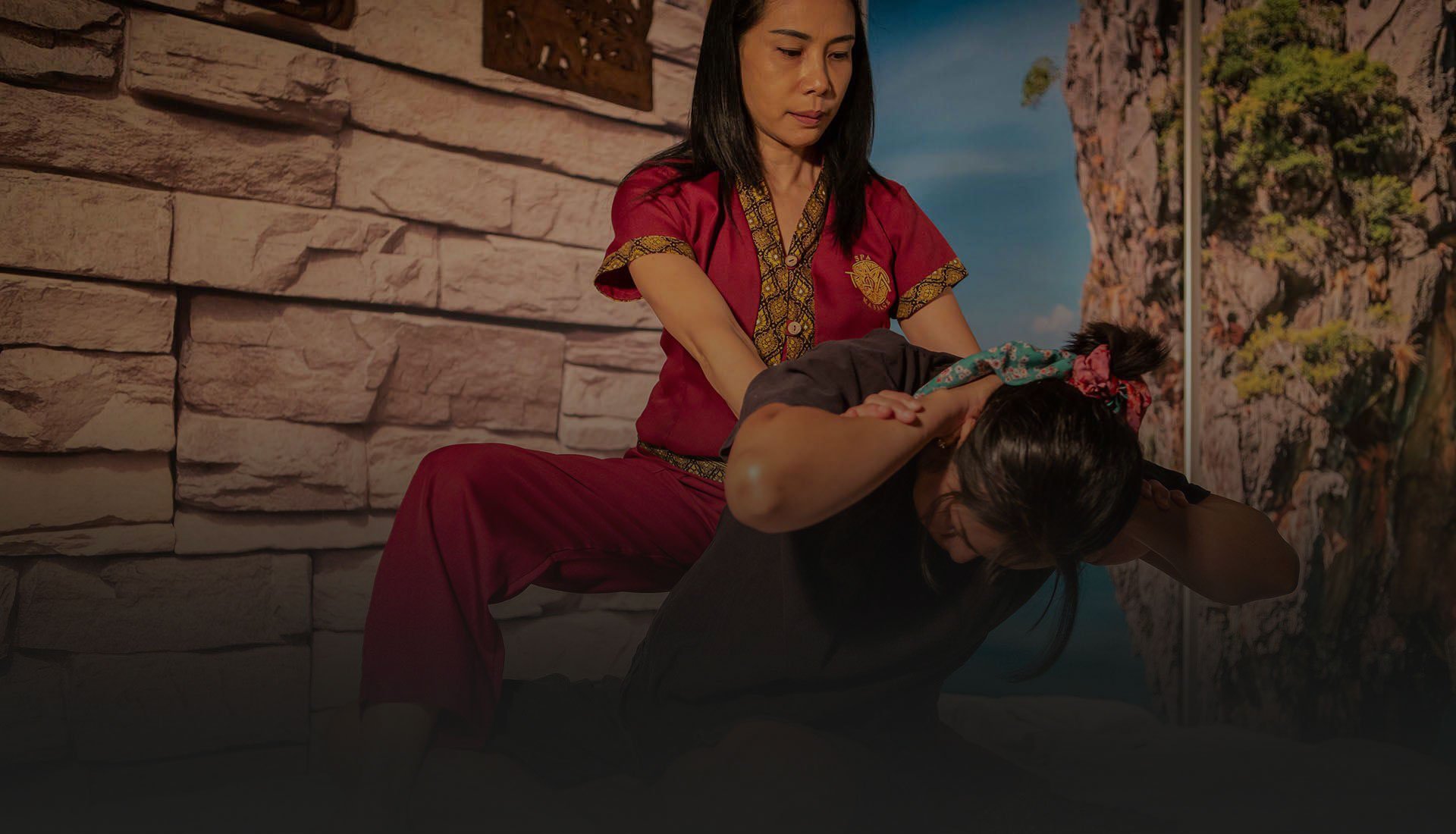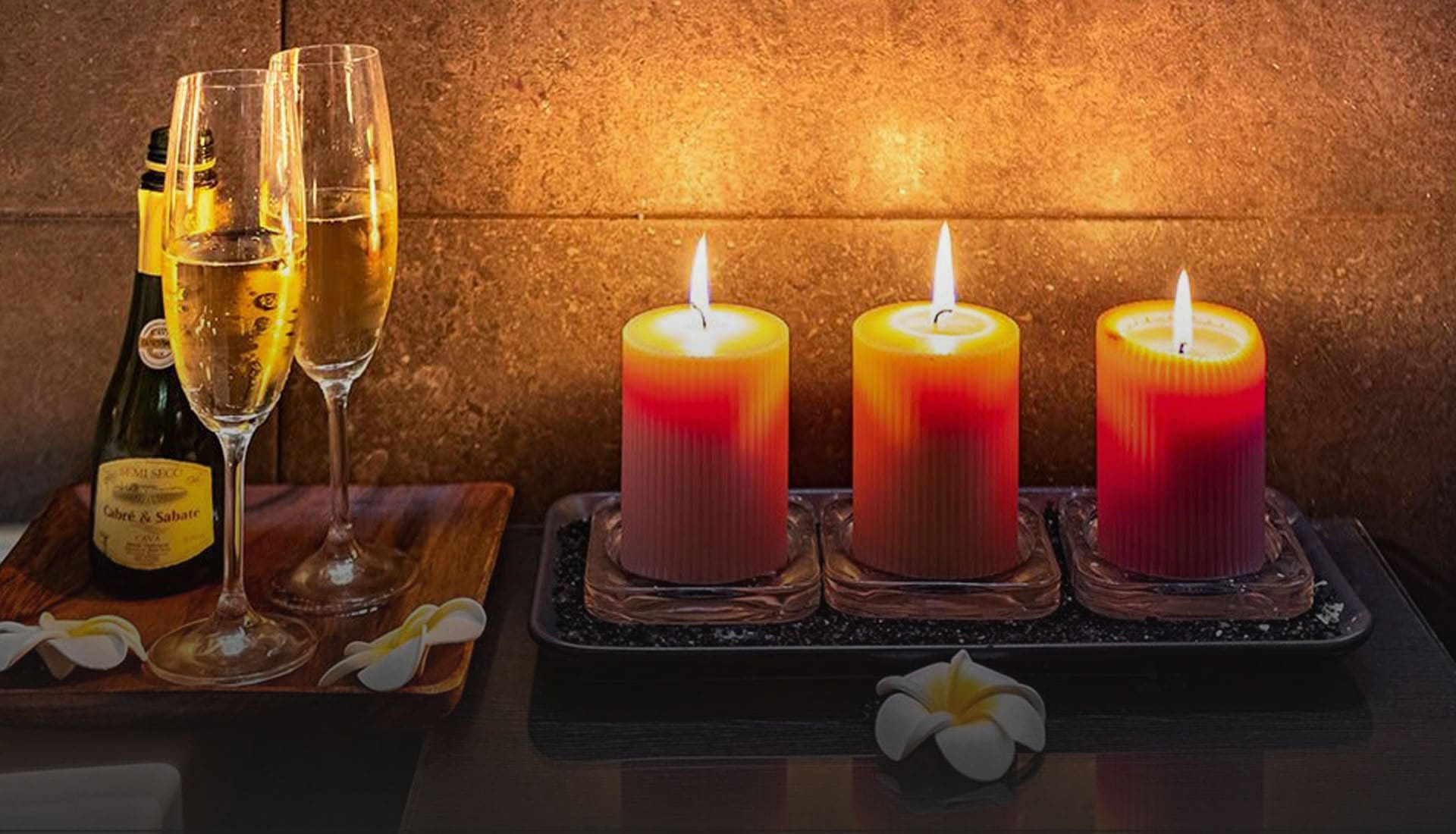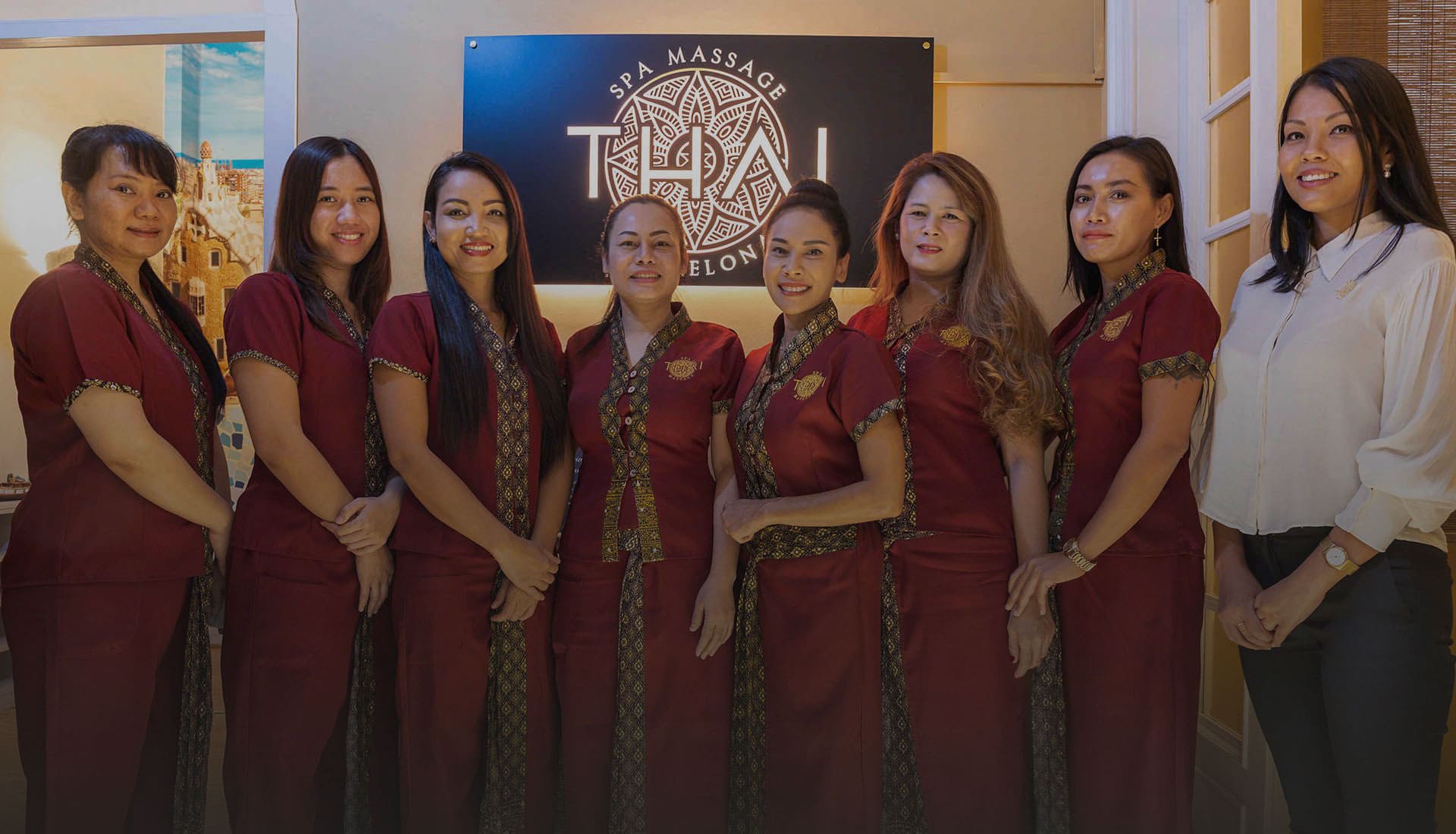Reusi Dat Ton is the type of yoga practiced in Thailand, focused on stretching, concentration, physical resistance and, above all, well-being.
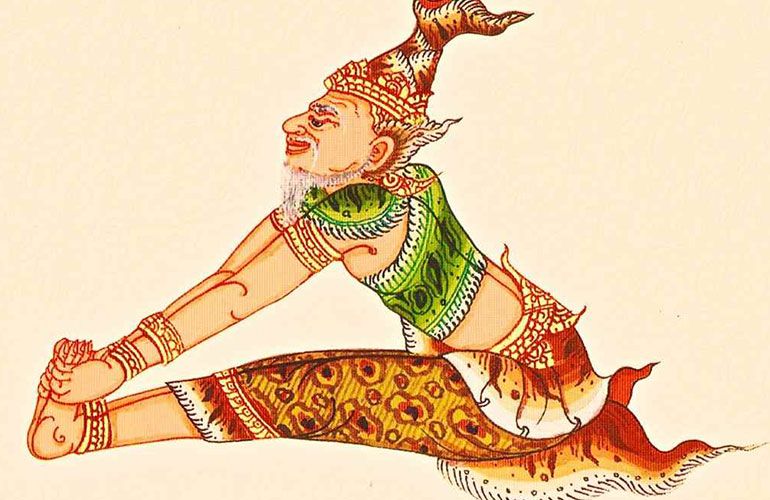
Illustration of the Reusi Dat Ton posture to relieve abdominal tension, Samut Thai Kao (“Reusi Dat Ton”, manuscript from 1838 )
The Reusi Dat Ton also known as Thai yoga is the original germ of many of the current disciplines, among which our Thai Massage is included. As we have already explained in previous occasions, the basis of Thai philosophy, which also serves as the foundation for its medicine traditional and all cultural and religious practices used to achieve the well-being of the body and its balance with the mind, are based on the Sen lines or paths. These lines, which cross the body from hemisphere to hemisphere, are responsible for distributing vital energy —or qi, according to Chinese philosophy— throughout our body. But sometimes, on these lines there may be retentions that make such distribution difficult. These retentions or blockages can lead to more serious illnesses if that energy is not managed. The best ways to release it are the Reusi Dat Ton and its descendant, the Thai massage.
This therapeutic gymnastics should also be practiced from the basic level to the most advanced. “And if I have more physical capacity than the most basic exercises, why should I do the simplest postures?” You might ask. And the truth is that the most advanced levels require a skill that only a person with years of preparation can carry out. Because thai yoga is not only about physical movement. In this yoga, as in all the other different aspects, you have to be able to maintain the balance between the mind and the body, and as much as your body is prepared for the challenge that the postures entail, you have to know how to maintain a fluid breath. and relaxed, the mind blank but present in the exercises, and achieving this level of mental control takes many years of practice.
Thai Tip!
From Thai Spa Massage we want you to live the full Thai experience and to be able to incorporate some 100% Thai tricks into your daily life. These simple Reusi Dat Ton exercises for two people will help you relieve the pain that may arise as a result of the routine.
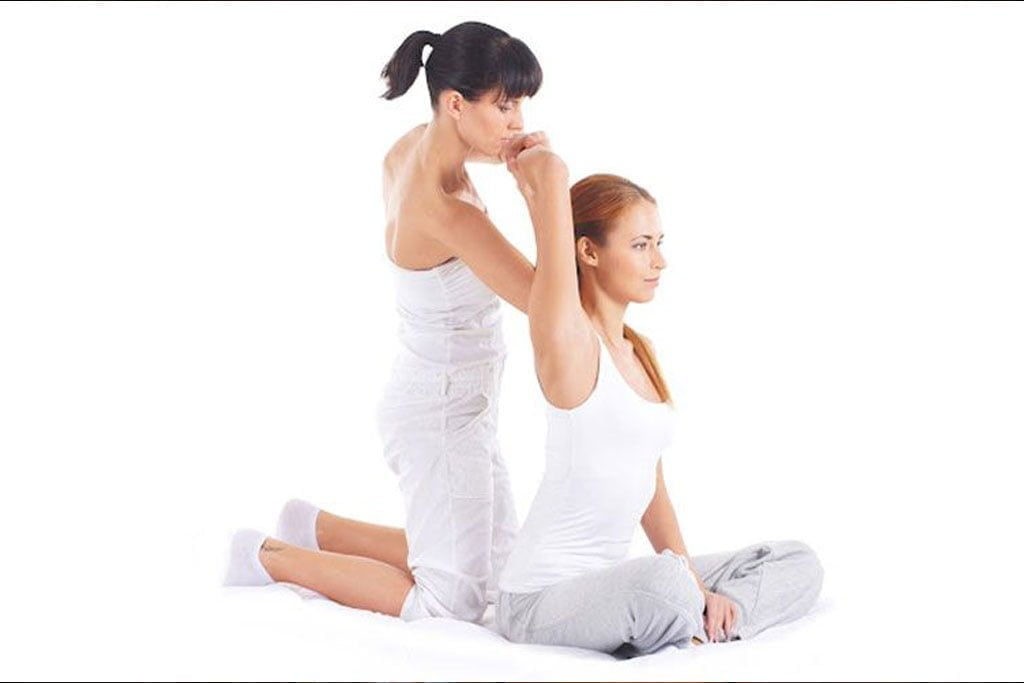
Exercise 1: Get on your knees, on a mat, yoga mat or any cushioned surface that does not cause you pain. Sitting in the lotus position, bring your left hand to your ankle while your partner gently stretches your right arm from the forearm, as in the image. It is important that this is done slowly, being aware of the path that the hands are taking. This will help you reduce the tension in your shoulders, so typical of professions that spend a lot of time sitting in front of the computer.
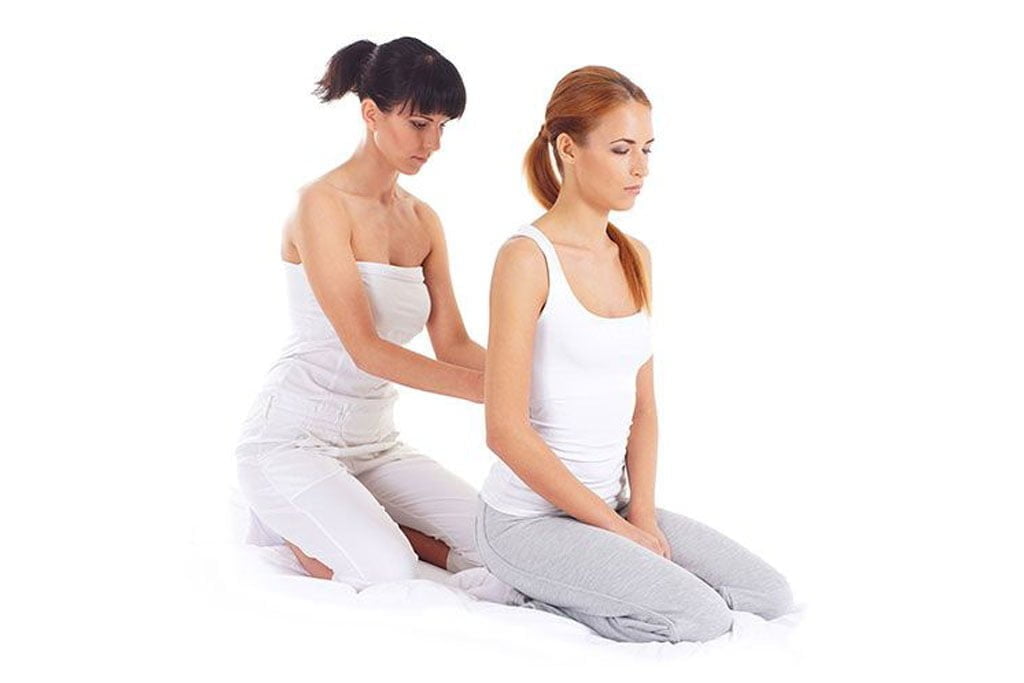
Exercise 2: On your knees, place your hands in the Namasté position—palms together vertically in front of your chest and elbows extended— and bring them towards your thighs, as in the image. Then return to the original Namaste position as you exhale and your partner presses your back at the lumbar muscles. This exercise will help relieve pressure and regulate your breathing.

Exercise 3: In the same position as in the first exercise —lotus position— clasp your hands behind your head, at the height of the nape. Once in that position, and without stopping interlocking your hands, your partner should stretch slightly backwards, from the elbows, while exhaling. This exercise helps with pain in the upper back, lower back, and belly.
For more advanced exercises, always do them under the supervision of a professional.
Thai moment!
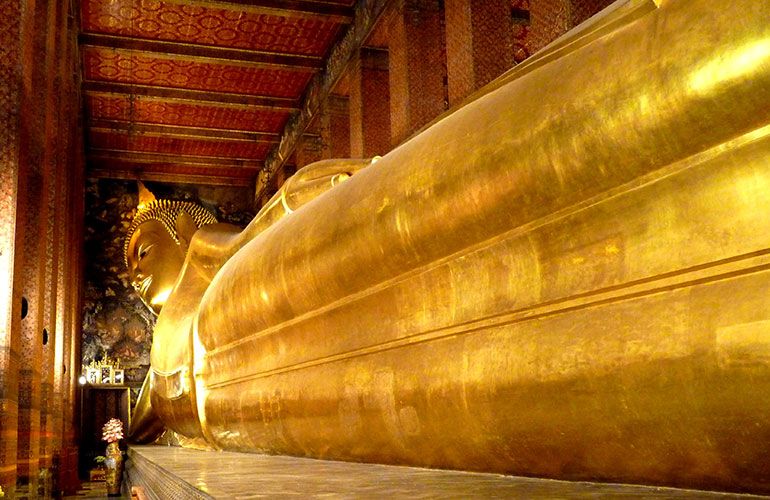
One of the Thai wonders: the image of the reclining Buddha represents the Buddha’s entry into Nirvana and the end of all reincarnations. The figure is 15 m high and 46 m long and is located in the temple of Wat Phra Chetuphon.
Reusi Dat Ton, the same as Nuad Boran, or Thai massage , has many examples of its representation in the traditional art of temples and monuments. This arises from the fact that King Rama I in 1767, after the ancient capital of Ayutthaya was conquered by Burmese troops, decided to rebuild national pride through buildings, statues, paintings and frescoes, showing different facets of Thai culture. If you are in Bangkok, do not forget to visit the temple of Wat Phra Chetuphon, better known as the Wat Pho temple, where apart from finding a reclining Buddha 46 meters long and 15 meters high, you can find numerous bronze statues practicing some Thai yoga postures.
Reusi Dat Ton and Thai massage are disciplines that century after century have gone hand in hand. After all, they are different practices with a common origin and goal, your well-being. And in that case, our team will be happy to help you achieve it! Visit our massage range to select the different types of massages we can offer you and do not hesitate to contact us your doubts to select the massage that best suits your needs.
Las diferentes vertientes del yoga físico
Diferentes fuentes señalan que las vertientes del yoga pueden describirse con la analogía de un árbol. En este árbol hay tres ramas principales, de las que surgen un montón de otras ramas y ramitas que componen la imagen total de lo que es el yoga y toda sus variantes. Estas tres vertientes son, el yoga hindú, el yoga tibetano y el yoga ceilandés. Las mismas fuentes nos explican que el Reusi Dat Ton se cataloga dentro del yoga tibetano por su similaridad en los patrones de respiración, poses y algunas técnicas y , además, ¡se dice que podrían tener un origen común!. Estas similaridades también se dan en muchos casos con el yoga ceilandés. La razón de esto es sencilla, la proximidad de estas poblaciones con Tailandia ha ido influenciando las prácticas locales.
